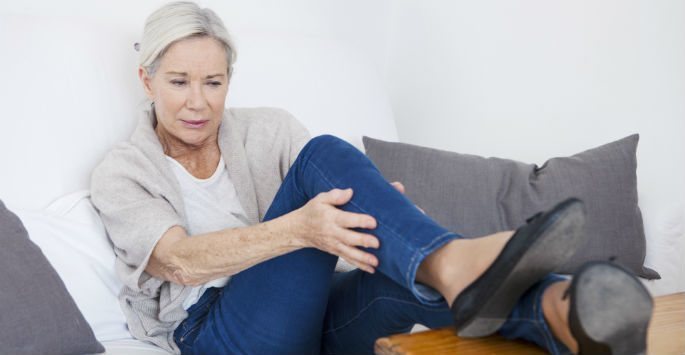Both gout and pseudogout are types of arthritis characterized by inflammation of a joint. Both are caused by an abnormal accumulation of crystals in a joint. Despite the similarities, there are important differences in gout vs. pseudogout.
Different Chemicals and Crystals
Gout is caused by an abnormal buildup of urate or uric acid. A certain amount of urate within the body is normal, and the excretory system expels any excess naturally. In a person with gout, the excretory system doesn’t expel enough urate, and it accumulates within the patient’s blood stream. As it accumulates, the urate forms crystals that typically gather in a joint and irritate and inflame it.
In pseudogout, the crystals are made of calcium pyrophosphate (CPP). The crystals form in the cartilage and eventually leak into the joint fluid. At this point, they cause a painful attack of arthritis. Researchers have not yet determined the cause of the abnormal buildup of CPP crystals, but they have noted that it tends to happen after an illness or injury involving the affected joint.
Gout vs. Pseudogout: Different Risk Factors
Various conditions can increase the risk of developing gout. As per the stereotype, obesity is one such risk factor, especially if the patient is also male and at least middle-aged. Gout is more common in men. Younger people can develop the condition, especially if it runs in their family. African Americans are more likely to develop it than are Caucasians. Health problems linked to gout include diabetes, high blood pressure, bone marrow disorders, some blood disorders and severe psoriasis. Diuretics and other medications that increase uric acid levels can also cause gout.
Gout has also been linked to certain habits. For example, drinking a lot of alcohol increases the chances of developing the condition. People who don’t get enough Vitamin C in their diet or drink too many sugary drinks are also more likely to develop it.
A susceptibility to pseudogout may run in families. Like gout, it is much more common in older people; most patients are at least 60 years old. Pseudogout is commonly seen in people who also have osteoarthritis, thyroid trouble and various disorders affecting the metabolism of iron, calcium or phosphate. Kidney problems increase the risk of developing both conditions. Unlike gout, neither gender nor ethnicity seems to affect susceptibility to pseudogout.
Different Joints are Usually Affected
On paper, gout can affect any joint, but about half of all cases involve the big toe. In many of the other cases, the wrist, fingers or heel are affected. Pseudogout most commonly involves the knee. Other common sites are the wrist, shoulder, hip or ankle.
What About Prevention?
So far, researchers have not found any links between pseudogout and a patient’s habits. For example, while there is a link between gout and obesity, no such link has been found for pseudogout and obesity.
A patient with gout might be able to prevent further attacks by cultivating healthy habits. If they drink, they should at least reduce their alcohol intake. If they are overweight, they should follow an exercise and diet regimen to lose weight.
Get All the Facts
If you are experiencing symptoms of either of these two conditions, make an appointment at Arora Hand Surgery to see how your situation can be addressed. You don’t have to live with your painful condition. Contact us today to schedule a consultation at our office in Macomb Township, West Bloomfield, Howell, or Warren.













